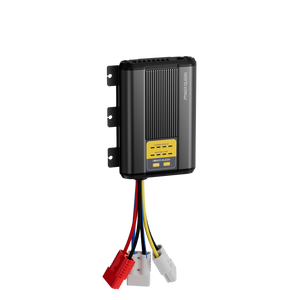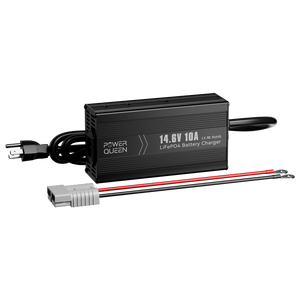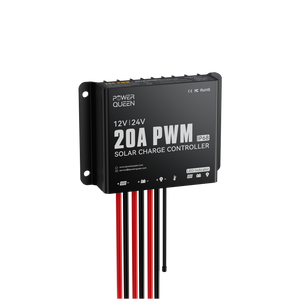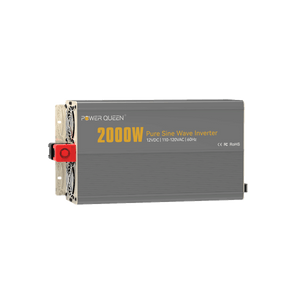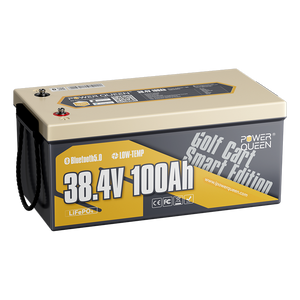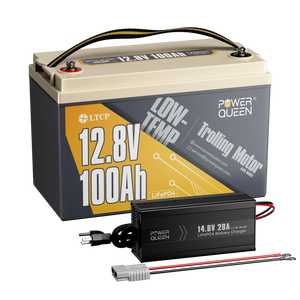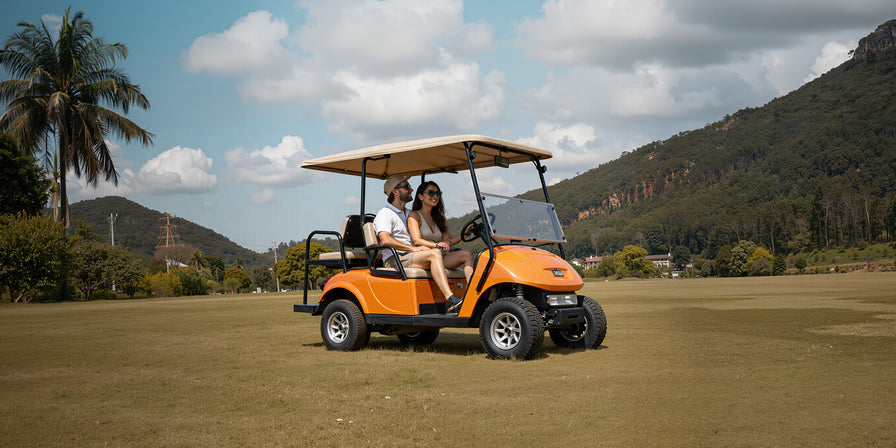Full Guide of Group 31 Battery , Dimension, Features and Recommendation
Group 31 batteries are known for their reliability, durability, and versatility, making them a popular choice for various applications. Whether you require a power source for heavy-duty vehicles, marine applications, or industrial machinery, understanding the dimensions of a Group 31 battery is crucial for a proper fit and optimal performance.
This article will delve into the intricacies of Group 31 battery dimensions, their significance, and how to select the right battery based on these factors.
What Are Group 31 Batteries?
A Group 31 battery is a type of deep cycle battery that belongs to the BCI (Battery Council International) group size classification. It is a standardized size for automotive batteries, typically used for commercial and heavy-duty applications.
Applications of Group 31 Batteries
Group 31 batteries are widely used in various applications such as marine vessels, recreational vehicles (RVs), solar energy storage systems, semi-trucks, and backup power solutions. They are known for their versatility and reliability in these specific areas.
- Marine
- RVs
- Commercial Trucks
- Solar Systems
- Heavy Equipment
- Emergency Backup
- Automotive
- Industrial Machinery
- Electric Wheelchairs
Group 31 Battery Dimensions
Group 31 batteries follow a standard sizing system to ensure compatibility across various devices. The common dimensions for a Group 31 battery are approximately 13 inches in length, 6.8 inches in width, and 8.8 inches in height. However, these dimensions may slightly vary between different manufacturers due to design differences and added features.
Significance of Battery Dimensions:
Understanding the dimensions of a Group 31 battery is essential for several reasons:
A. Proper Fit: It is crucial to ensure that the dimensions of the battery align with the available space within the application. A snug fit is necessary to prevent any movement that can damage the battery or cause electrical connections to loosen.
B. Stability: A well-fitted battery is vital for maintaining stability. Vibrations or jostling can affect the internal components of the battery and reduce its overall lifespan. Proper dimensions allow the battery to be securely mounted, minimizing the risk of damage.
C. Electrical Connections: The dimensions also impact the positioning of electrical terminals and their compatibility with existing connections. Ensuring that the terminals align correctly with the application's electrical system is essential for optimal performance and efficient energy transfer.
Types of Group 31 Battery: Lead Acid VS LiFePO4 Lithium
To ensure an informed decision, let's compare the different types of Group 31 batteries available in terms of their features and advantages. We'll examine four types, including lithium, AGM, gel, and flooded batteries, to determine the best fit for your needs. Each type has its own distinct qualities that should be taken into consideration when making a purchase decision. It is crucial to understand the specific attributes of each battery type to ensure proper usage based on the demands of your application.
Flooded Lead-Acid Group 31 Battery
Group 31 batteries have long been popular for various power systems, but they are becoming less favored compared to newer, more durable options such as lithium batteries. Flooded lead acid Group 31 batteries, in particular, require regular upkeep, including corrosion monitoring and electrolyte level maintenance to ensure they perform optimally. Without proper care, their already limited lifespan can be further shortened. Consistent charging is also necessary to prevent these batteries from dying. While flooded lead acid batteries may seem cost-effective in the short term, they ultimately come with higher long-term costs, especially when compared to lithium batteries.
Summary of Flooded Lead Acid Group 31 Batteries:
- Widely used but becoming less popular due to higher-quality options available
- Require regular maintenance, including monitoring corrosion levels and electrolyte levels
- Shorter lifespan if not properly maintained
- Need consistent charging to ensure optimal performance
- Initially cost-effective but can be more expensive in the long run compared to other options like lithium
Group 31 Gel Battery
Gel Group 31 batteries are highly regarded for their deep cycle performance, vibration resistance, and versatility. They are equipped with a gel-like electrolyte that ensures spill-proof and maintenance-free operation. These batteries offer high power outputs and typically have a lifespan of about six years, similar to AGM batteries. Although they may be more expensive initially, they prove to be a better long-term investment compared to lead acid batteries. Gel Group 31 batteries find wide applications in recreational vehicles, marine equipment, off-grid solar systems, backup power supplies, and various other uses.
Summary of Group 31 Gel Batteries:
- Deep cycle performance and vibration resistance
- Gel-like electrolyte provides spill-proof and maintenance-free operation
- Delivers high power outputs and offers versatility
- Lifespan similar to AGM batteries, lasting up to six years
Group 31 AGM Battery
AGM batteries are a popular option among those seeking reliable and low-maintenance power sources. These Group 31 batteries are known for their vibration resistance and fast recharge capabilities. They utilize an Absorbed Glass Mat (AGM) separator, which absorbs the electrolyte. This design makes them spill-proof and maintenance-free, similar to lithium batteries.
While AGM batteries may not have the same lifespan as lithium batteries, they still offer a solid performance and provide a long life span, typically lasting up to six years. They are suitable for various applications, including vehicles, boats, RVs, solar systems, and wind energy systems. Overall, AGM batteries are a dependable choice for those who prioritize safety and convenience.
Summary of Group 31 AGM Battery
- Good vibration resistance and fast recharge capability
- Utilizes Absorbed Glass Mat (AGM) separator for electrolyte absorption
- Spill-proof and maintenance-free
- Lasts up to six years, making it a reliable power source
- Suitable for vehicles, boats, RVs, solar systems, and wind energy systems
Group 31 Lithium Battery
Group 31 lithium batteries offer a wide range of features and advantages. They are lightweight, have high energy density, charge quickly, and require no maintenance. These batteries have a long lifespan of over 3,000 cycles and can operate in various temperatures, making them environmentally friendly options. Advanced lithium batteries like Power Queen have even higher charge cycles and longer lifespan ( charge cycles 4000-15000, 10 years lifespan). With a built-in battery management system (BMS), these batteries are also safer.

Moreover, Group 31 lithium batteries have a low self-discharge rate, meaning they can hold their charge for extended periods of time. This makes them ideal for emergency backup power or for use in vehicles that may be parked for long periods without use.
Furthermore, these batteries are highly efficient and can provide a steady and consistent power output throughout their lifespan. This reliability is especially important for critical systems that require uninterrupted power supply.
Group 31 lithium batteries also have a compact design, allowing for easier installation and integration into various applications. Their small size and lightweight nature make them ideal for use in portable devices or in tight spaces where every inch counts.
Overall, Group 31 lithium batteries are a superior choice for those in need of reliable, high-performance, and long-lasting power solutions. With their numerous advantages, these batteries offer a greener and more efficient alternative compared to traditional battery options.
Summary of Group 31 Lithium Batteries:
- Lightweight, reducing overall weight in applications
- High energy density provides ample power for demanding needs
- Fast charging and no maintenance required
- Exceptionally long lifespan of 8-10+ years with over 3,000 cycles, high quality lithium batteries like Power Queen, has over 4000 cycles.
- Environmentally friendly and safe option
Lithium Group 31 Battery Recommended
As we compared before, advanced lithium battery is a worthy investment. However, some people are concerned about the initial price, here comes Power Queen, which provides you high-quality but cost-effective deep cycle group 31 lithium battery.
The Power Queen 12.8V100Ah low-temp LiFePO4 battery is crafted using top-notch grade A LiFePO4 battery cells with a remarkable lifespan of up to 10 years. Its impressive cycle performance boasts 4000+ cycles at 100% depth of discharge (DOD), 6000 cycles at 80% DOD, and an astounding 15000 cycles at 60% DOD.
Power Queen 12V 100Ah LiFePO4 lithium battery’s dimension is 13*8.43*6.77 inch, which matches the dimension of group 31 size. What’s more, this battery upgraded with low-temperature protection in addition to the protection from over-current, over-charging, over-discharging, short circuit and high temperature.



FAQS about Group 31 Batteries
1. What is the difference between a Group 31 battery and other battery group sizes?
The main difference between battery group sizes is their physical dimensions, which include length, width, and height. Group 31 batteries are larger and have higher capacity compared to smaller group sizes, making them suitable for applications that require more power and longer runtime.
2. What are some common applications for Group 31 batteries?
Group 31 batteries are commonly used in a wide range of applications such as commercial trucks, buses, RVs, boats, construction equipment, and emergency backup power systems. Their high capacity and durability make them well-suited for heavy-duty applications that require deep cycling capabilities and reliable performance.
3. What are some considerations when choosing a Group 31 battery?
When selecting a Group 31 battery, it is important to consider factors such as capacity, power, durability, maintenance requirements, and cost. Different battery chemistries have their own advantages and considerations, so understanding your specific needs and application requirements will help determine the most suitable option.
4.How do Group 31 batteries compare in terms of cost?
The cost of Group 31 batteries can vary depending on the battery chemistry and brand. Flooded lead acid batteries are typically the most affordable, followed by AGM and gel batteries. Lithium batteries, such as LiFePO4, tend to be the most expensive upfront, but they offer a longer lifespan and higher performance. It's important to consider both the initial cost and long-term cost when choosing a battery.
Conclusion
Group 31 battery dimensions serve as a crucial parameter when selecting the ideal power source for your specific application. By understanding the dimensions and their significance in ensuring proper fit, stability, and efficient electrical connections, you can confidently choose a Group 31 battery that meets your requirements.
Remember to consider other factors such as capacity, durability, and maintenance needs to maximize the overall performance and lifespan of your battery investment.




















